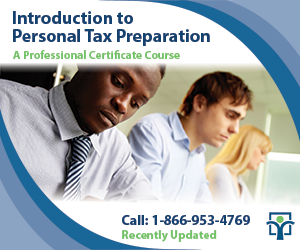Last updated: December 19 2017
Anything But Simple: Morneau’s Income Sprinkling Rules Start January 1

It’s official, family income sprinkling rules will take effect January 1, 2018, and, unless a family member can show active participation under still-complicated reasonableness tests, distributions of income from private family businesses will be taxed at top tax rates, with none of the progressivity in tax rates available to individuals. This will require an immediate rethinking of resources available to the economic unit known as the family business.
In its latest document on the subject, released on December 13, the government has conceded on some important areas from the initial proposals that were released July 18.
For example, amounts received by adult family members from “Excluded Businesses” in which they were “Actively Engaged” on a “regular, continuous and substantial basis” in the tax year or any five years at any time in the past, will escape the punitive top rate taxes, levied without progressive tax rates.
“Actively engaged” will refer to a labor contribution of at least 20 hours per week during the portion of the year in which a business operates – which recognizes the unique circumstances of seasonal businesses like farming. Otherwise, the recipient or “specified individual” would need to meet a more onerous reasonableness test to avoid the tax on split-income rules.
The “Reasonableness Criteria” will include four components, to be assessed by CRA on the facts of each case, and will apply if the income does not qualify under the “Excluded Business” and “Excluded Shares” definitions. Here’s an example of the detail which would have to be met by the taxpayer:
a. A Labor Contribution which will require justification on the nature of the tasks performed; hours required to complete the tasks; what a competitive salary/wage is for those tasks in similar businesses in the marketplace; time spent on the activities and the nature of the activities; the individual’s education, training, experience, knowledge, skills and know-how as well as past performance of the functions. As one can see, very detailed notes of every family member’s contributions will be required going forward.
b. Property Contributions which will include details on amounts of capital contributed to the business, amounts of loans, FMV of tangible and intangible property transferred (including technical knowledge, experience, skill or know-how), whether other sources of capital or loans were readily available, whether comparable property was readily available, whether property was unique or personal to the individual, “opportunity costs” and past property contributions. Again, family members must be prepared to provide lengthy, lifelong and detailed logs of their unique intellectual and financial contributions.
c. Risk Assumption. This will include the degree to which the individual is exposed to the financial risks of the liabilities of the company including statutory liabilities, the extent to which the contributions might be lost, whether the risk is indemnified and whether the individual’s reputation or personal goodwill is at risk (how to justify this is a bit of a mystery!). In addition, past or ongoing risk assumption will be considered.
d. Total Amounts Paid. To determine if amounts paid to a family member are reasonable, all other amounts “previously paid,” including salary or other remuneration, dividends, interest, proceeds and fees, as well as benefits and deemed payments will be considered.
For those between the ages of 18 and 24, a further test is applied on capital contributions. A “Safe Harbour Capital Return” will need to be calculated on contributions made to the business by these specified individuals. This return must not exceed a prescribed rate, calculated by a formula that is essentially the prescribed rate of interest for a quarter, times the number of days in the quarter a loan is outstanding, divided by the number of days in a quarter. The result for the year is the sum of the quarterly calculation.
 |
When it comes to taxable capital gains from the disposition of qualified farm or fishing property or qualified small business corporation shares, the amounts will be excluded from the split-income calculations if the individual is over 17 or if the capital gain arises, at any age, from the death of an individual or if the amounts arise pursuant to a court order or written separation agreement.
When it comes to retirement income planning, note that if one spouse has reached age 65 in the year and dividends are distributed to the other spouse, the other spouse can claim progressive tax treatment on dividends received in all cases. Unfortunately, these rules do not provide a level playing field with employees who get benefits from an employer-sponsored registered plan; those employees can income split at any age and the money doesn’t actually have to change hands.
For those who split dividends from a private corporation under the new rules, there doesn’t seem to be a limitation on how much income can be split – no mention of an election up to 50 percent of income, a restriction that applies to other private pension benefits when received personally. Further, the dividends will have to be paid to the recipient, one assumes.
In other news, a specified individual who receives income that would have been an “excluded amount” of a deceased spouse, will enjoy regular rates.
Clearly the rules are not simple, the recordkeeping will be very onerous and complex and it will require that many business owners change their share structures before the end of 2018. They will also immediately need to shore up recordkeeping procedures for family members who own shares or work in the business or lend money to the business, starting January 1, 2018, well before proposed rules are passed into law.
For incorporated family businesses and their advisors, it’s a new, unwelcome burden dropped on their laps just before the holidays, by politicians and finance department officials, many of whom have already departed for their vacations.
Evelyn Jacks is President of Knowledge Bureau, Canada’s leading educator in the tax and financial services, and author of 52 books on family tax preparation and planning.
©2017 Knowledge Bureau Inc. All Rights Reserved.





